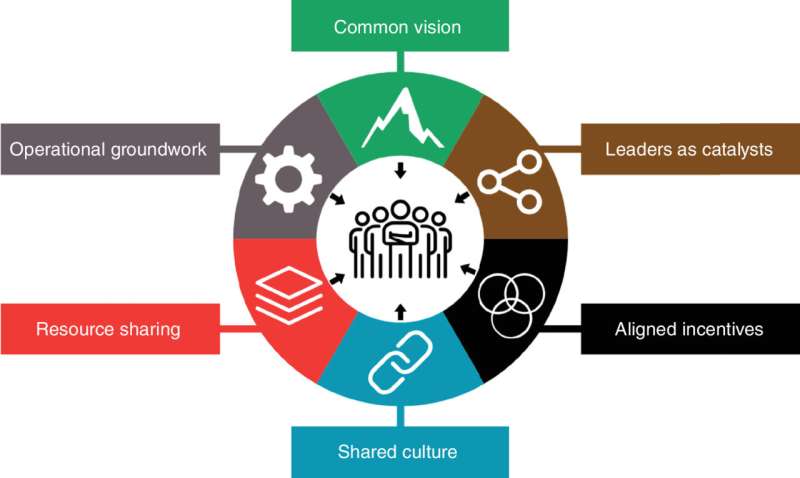This article has been reviewed according to Science X's editorial process and policies. Editors have highlighted the following attributes while ensuring the content's credibility:
fact-checked
peer-reviewed publication
proofread
Researchers present playbook of best practices for cancer team science in the modern era

The oncology community has a powerful opportunity to speed the creation of impactful new treatments by adopting a modern playbook for collaboration, according to scientists from Break Through Cancer and other team-oriented cancer organizations working together in a commentary in the journal Cancer Discovery.
Jesse Boehm and Tyler Jacks of Break Through Cancer, a Boston-based cancer research foundation, present what they call the "essential ingredients" for next-generation cancer team science, and offer examples from organizations in the United States and abroad that demonstrate these best practices.
"Given the magnitude of the challenge, we need to work together in new ways if we want to make faster progress against difficult diseases, such as pancreatic cancer and ovarian cancer," says Tyler Jacks, Ph.D., president of Break Through Cancer and founding director of the Koch Institute for Integrative Cancer Research at the Massachusetts Institute of Technology.
In 2024, while numerous cooperative efforts in cancer research are making headway, to fully realize the potential of team science, structural reforms are needed to optimize and speed those efforts, the authors suggest.
"We are at an unprecedented moment for the field of oncology, with the advent of single-cell genomics, machine learning, and other innovative technologies," adds Jesse Boehm, Ph.D., chief science officer of Break Through Cancer and a cancer genomics researcher at MIT's Koch Institute. "In this moment, we can leverage new approaches to radically collaborate and thereby achieve some of our most ambitious clinical goals."
Radical collaboration refers to team science that champions the six "Hallmarks of Cancer Collaboration," modeled after Douglas Hanahan's and Robert A. Weinberg's seminal "Hallmarks of Cancer." In the commentary, Boehm and Jacks outline and examine the six hallmarks: common vision, leaders as catalysts, aligned incentives, shared culture, resource sharing, and operational groundwork.
Additionally, they review the history of how NCI-led efforts set a precedent for cancer team science and provide practical examples of radical collaboration from organizations that fund cancer team science, including Break Through Cancer, Cancer Research UK, the Parker Institute for Cancer Immunotherapy, and more.
The authors conclude with a call to action for the cancer community: to seize the moment and optimize the way team science enterprises work, and to continue the conversation about best practices in the field. Finally, Boehm and Jacks urge major funders of cancer team science to work together to support and sustain team efforts.
More information: Jesse S. Boehm et al, Radical Collaboration: Reimagining Cancer Team Science, Cancer Discovery (2024). DOI: 10.1158/2159-8290.CD-23-1496

















